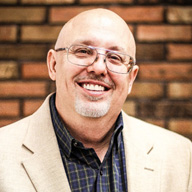Virtual Roundtable: Engaging Attendees and Evoking Emotion with Event Technology
Long before the coronavirus outbreak, live event professionals were facing an unprecedented rate of technological innovation. Cutting edge tech such as projection mapping, virtual, augmented, and mixed reality, 360 LED screens, and a slew of other acronyms were becoming somewhat regular jargon in live event conversations.
When faced with a challenge like responding to a global pandemic, there are strong incentives to accelerate innovation and put certain new technology to the test. AVIXA™ spoke to a virtual roundtable of live event experts to ask them their opinion on which technologies are in demand now and which are set to be an integral part of their offering in the near future.
Meet the Participants

Doyle Martin
COO, TLS Productions

Heidi Brumbach
CEO, Technisch Creative

Fabio Stein
COO, macomNIYU GmbH
Doyle Martin has provided lighting designs ranging from outdoor environments to the UN Economics Convention, lighting for Grammy Award winning musical groups and Fortune 500 companies.
Heidi Brumbach leads one of the only certified Women’s Business Enterprise companies specializing in AV production. Technisch Creative has been recognized as an industry leader by the International Live Event Association and Meeting Professionals International.
Fabio Stein has 15 years of event industry experience. He received international recognition with his work on the BMW project iNEXT Vision Worldflight, in which a flying showroom was created in a Boeing 777F.
Considering the rise of digital communities and social media, how has the role of live events changed?
“The human urge to be part of something, to know that your internal thoughts and feelings are shared among hundreds, thousands, tens of thousands is something that will never go away.”
Doyle Martin
Fabio: We are currently in a state of transition. Live events will hopefully continue to exist because for many clients, direct contact with customers and journalists is still very important. The cancellation of many trade fairs, particularly the Geneva Motor Show, has shown that the possibility for digital presentations is becoming increasingly important and offers another experience.
Nevertheless, live events will always have a special charm, with a more intense customer experience.
This is comparable to going to the cinema or watching a film on the couch at home. When you go to the cinema, you concentrate 100% on the film. At home, the focus may not be on watching the film to the same extent. It is similar with live events and digital presentations. It is much easier to concentrate the guest's attention on the product at a live event than with digital presentations.
Doyle: I think that now more than ever, the basic human need to gather and share experiences and emotions creates an even greater need for live events than ever before. The human urge to be part of something, to know that your internal thoughts and feelings are shared among hundreds, thousands, tens of thousands is something that will never go away and will always make live events a highly desirable part of modern life.
Heidi: Heidi: I see digital communities and social media as a great complement to live events, but nothing can replace face-to-face connections. The live event has now become even more valuable. It’s the culmination of the conversations and connections made in the digital world.
How can technological solutions be used to enhance the event experience?
“Content is king. As planning engineers for event technology, we believe that technical solutions only make sense if they support the communicated content in a meaningful way.”
Fabio Stein
Heidi: Solutions like streaming video when integrated with social media can help an audience be involved. They can ask questions, make comments, and contribute to outcomes.
Doyle: I see technology, particularly social media and remote viewing technologies, as an extension of what we do as live event professionals. I do think we have to be very careful to make sure that the technologies don't upstage the actual purpose of the live event.
We want to make sure we are allowing attendees to share their experience, but we have to make sure that the actual experience is engaging and provides the kind of memories that achieve a lasting place in the mind of the attendees.
Fabio: Content is king. As planning engineers for event technology, we believe that technical solutions only make sense if they support the communicated content in a meaningful way.
The largest and best LED wall is useless if there is no appropriately produced content for it. The same applies to audio and light installations. The lighting design and the programming of shows is often underestimated by customers. However, if you look at installed lighting technology in the same way as an LED screen, every customer would immediately realize that a "content designer" is also needed for the lighting programming - because the programmed light show is essentially nothing more than the film on an LED wall - content.
Therefore, we think that technological solutions can serve to make events more impressive and immersive and can continue to provide “WOW! moments." But more importantly – what is the message to be conveyed?
This links to our first question and we believe there will be a new balance between digital and live events.
Which engagement technologies have caught your eye and are worth investing in?
“Live streaming technologies are an important tool to keep in our arsenal.”
Heidi Brumbach
Heidi: I think live streaming technologies are an important tool to keep in our arsenal. As we’ve watched companies reinvent and offer streaming services during the pandemic, we’ve decided to stay focused on what we do best, live events. However, we know there will be a need for several months, or even years to add streaming capabilities to the live event production.
Doyle: I'm a big fan of crowd engagement technologies. Things like dmx controllable wristbands and necklaces that make the attendees an active visual element of the show. I've always believed that the more you can make the audience feel like they are an integral part of the event - that they are not simply spectators but are helping to enhance the show - the better the experience.
Fabio: This is a very exciting question. Basically, for several years, there hasn't been any new technology that we haven't already seen.
For some years now, all products have been evolving, but have experienced little or no revolution. Everything is becoming more powerful, of higher quality, and sometimes easier to use. From a video planner's point of view, I find high dynamic range to be the most impressive advancement, since the qualitative step forward is most clearly perceptible with corresponding content. Also, AV over IP will provide new solutions, new workflows, and new experiences in the very near future.
What has been your best experience of engaging attendees with event technology to date?
“You simply can't replace the wow factor and the emotional connection that is crAeated by well designed and executed lighting.”
Doyle Martin
Heidi: It’s been several years now, but text to projection screen was a big leap that got the audience involved in the “show.”
Fabio: We have involved our participants through voting systems or similar question and answer systems. Even this has already shown that by involving the audience, a new type of experience can be created that can definitely represent added value for the guest.
Doyle: With the intense focus that many environmental designers have today on the use of video elements, I still find that the single most emotionally impactful thing you can do is to have a real focus on the lighting for your event or show. Although video certainly has its place, I see a lot of events, exhibits, and shows where the use of video (and the amount of budget dedicated to it) eclipses the lighting for the event. I suppose I'm somewhat old fashioned, but you simply can't replace the wow factor and the emotional connection that is created by well designed and executed lighting. I don't suppose this is an answer to the question, but I do think it is worth stating.
What do your priorities boil down to and why?
“The live experience should be in the forefront. Any new technologies we propose to our clients should enhance the experience without distracting from it.”
Heidi Brumbach
Fabio: We look at every event planning and execution as if it were the most important event in the world. And for most clients and their project managers it is exactly that. It is almost irrelevant whether it is a world premiere or a 20 square meter exhibition stand. Therefore, mistakes are almost unforgivable and should be avoided as far as possible. That is why we pay great attention to backups and failure solutions in all our planning to be able to finish the event successfully even in case of errors. In second place is the undisputed quality of the event. In our role as onsite construction manager, we not only ensure the function of the technology but also the high-quality installation - from the shortest cable to the perfect alignment of the LED wall.
Doyle: I come at this from a very lighting and audio-centric place. Our first priority should always be to support and enhance the act (in the case of live music) or the message/environment (in the case of events, exhibits, meetings, and theater). I still very much see our job in live events technology as first and foremost to enhance and support the talent and messaging of those who contract our services. We have to resist the urge to make it about us (our visuals, our lighting, our mix) and always keep in mind that it's not about "us" but rather it's about those who hire us and more importantly, the audience or attendees.
Heidi: I still want the live experience to be in the forefront. Any new technologies we propose to our clients should enhance the experience without distracting from it.






